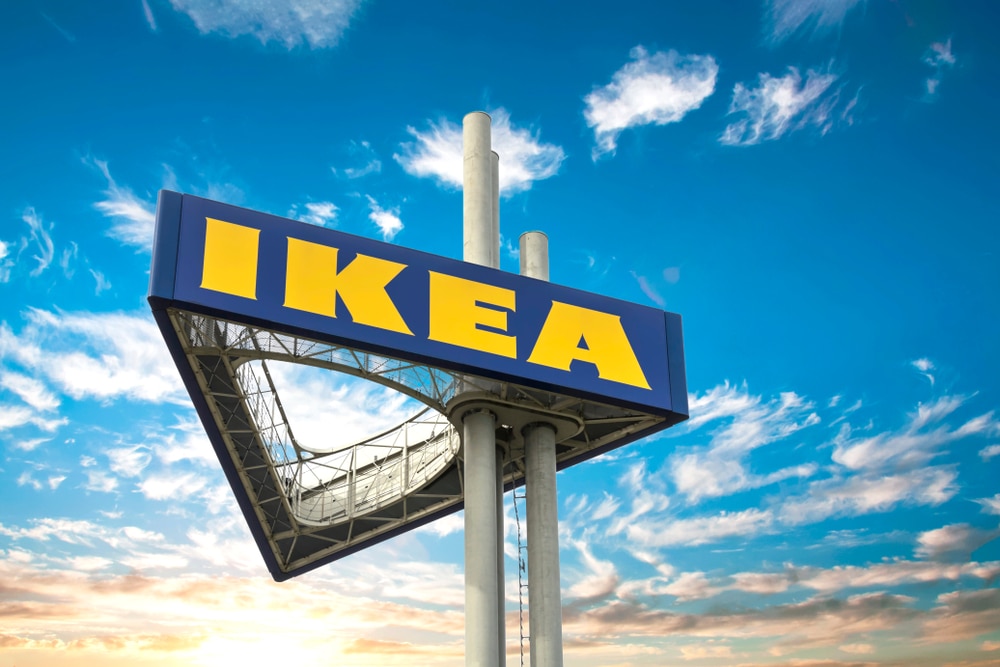
IKEA is one of the top furniture stores in the world. They sell great products at a reasonable price. They create products based on the price they want to sell them for. Because of this, competitors have difficulty competing with this top furniture brand.
IKEA’s competitors might have better luck if they copy IKEA’s strategy. IKEA is determined to save money anywhere it can. They recycle materials, design their products themselves, and hire limited staff.
It can be challenging to copy this strategy with the right resources.
What is the IKEA strategy?
The IKEA strategy is focused on saving money by reducing costs in every aspect of their business. This includes designing products, recycling materials, and hiring a limited staff. Due to these cost-saving measures, competitors can find it difficult to replicate this strategy successfully.
One challenge faced by competitors trying to copy IKEA’s strategy is access to the right resources. IKEA has large teams of designers and engineers who create their products from scratch, which allows them to keep costs down.
They also have a network of suppliers they work with regularly, which gives them greater control over pricing.
Another challenge for competitors is maintaining the same level of quality as IKEA. The company is known for its high-quality, durable furniture that can withstand the test of time.
To achieve this level of quality, IKEA puts a lot of resources into research and development to ensure that its products meet exacting standards.
While it may be possible for competitors to replicate some parts of IKEA’s strategy, it is unlikely that they will achieve the same success level as this furniture company.
What sets IKEA apart from its competitors is its relentless focus on saving money and providing customers with high-quality products at a reasonable price.
One of these stores is Walmart. Walmart has all sorts of products. They sell food, electronics, furniture, and more. While Walmart is one of IKEA’s top competitors, they don’t need to copy IKEA’s strategy.
Their main revenue does not come from their furniture, so taking tips from IKEA is non-essential. Walmart sells many other products, and they have a different strategy from IKEA.
Rather than copying IKEA’s strategy, Walmart should continue to focus on its existing business model. They have built a strong brand that resonates with customers across the country and around the world.
They also have many stores – more than 2,300 locations in the United States alone – which allows them to reach many people and sell products quickly.
Walmart’s strong supply chain enables them to offer its customers low prices on all its products.
IKEA is an excellent example of a retail company that has found unprecedented success by focusing on one aspect of business: furniture design and sales.
However, Walmart does not need to mimic IKEA’s strategy to remain successful and relevant in today’s market.
Walmart will continue to thrive by sticking with its current approach, which has served them well for decades.
This is a great example of how companies can succeed by focusing on their core strength – furniture design, food sales, or electronics.
While Walmart may face some competition from IKEA, the two companies are different enough that it doesn’t make sense for Walmart to copy IKEA’s strategy directly.
Instead, Walmart should continue with its proven approach, which has already led to great success. This will ensure that both customers and shareholders continue to be satisfied with Walmart’s offerings.
There is no doubt that IKEA is a successful company. Despite IKEA’s widespread popularity and success, it faces some competition from other companies like Walmart.
Amazon is another competitor of IKEA. Their strategy is similar. Instead of being charged to assemble the products, they ship them out unassembled. This reduces costs.
Other than that, they are an online shop. They don’t have a physical store, so their strategy strays from IKEA’s.
Amazon has started selling some IKEA products, which helps both stores. But it is a little harder to buy from IKEA’s website since you can’t walk through their store.
While there are many similarities between Amazon’s and IKEA’s strategies, they also differ in key ways. For one thing, while both companies ship out unassembled products to cut costs, Amazon does this exclusively.
In contrast, IKEA sells assembled and unassembled products, allowing them to reach a wider audience.
Amazon has all of its products available online only. This means that consumers cannot physically visit their store or browse through the selection in person, making it more difficult for potential customers to decide whether or not they want to buy from Amazon.
In contrast, IKEA has brick-and-mortar stores worldwide, making it much easier for customers to browse and evaluate their products before making a purchase decision.
Another key difference between Amazon’s and IKEA’s strategies is that Amazon does not currently sell any of IKEA’s products on their website, while IKEA sells some products from Amazon.
This means neither company is directly competing with the other and instead offers complementary products for their customers.
Both companies have successfully leveraged cost-saving strategies and focused on online sales. Still, they also differ in important ways that help them reach different consumers and achieve other goals.
Wayfair is another store that competes with IKEA.
They are a furniture store that also focuses on decor. It was founded in 2002 and had many of the same values as IKEA.
They practice the same strategy as IKEA by offering quality discounts and selling products online. They also adopt the same idea of employment.
They don’t need as many employees when the assembly is unnecessary. Wayfair is probably the store that uses strategies most similar to IKEA.
IKEA’s strategy is difficult to duplicate, as the company has built a strong brand and customer base loyal to its products.
This is due to the company’s focus on offering high-quality products at low prices, its unique in-store experience, and distinct branding.
IKEA’s flat-pack design allows the company to keep costs down by reducing the need for specialized assembly workers. Its use of large warehouses for storage will enable it to pass on savings to customers.
However, competitors like Wayfair can still mimic many aspects of IKEA’s strategy. While they may not match the exceptional and widespread customer service that IKEA’s stores provide, they can offer similar products at lower prices.
They can focus on selling their furniture and home decor products online, allowing them to reach customers that IKEA may not be able to target.
While competitors like Wayfair can replicate some aspects of IKEA’s strategy, the company can still maintain its competitive edge due to its unique brand identity and loyal customer base.
For this reason, it will likely remain a leader in the furniture-retailing industry for years.
Yet another IKEA competitor is Sears. They have plenty of quality furniture at an accessible price. But like Walmart, Sears sells loads of products. Selling furniture is not their only business venture, so they don’t have to use IKEA’s strategies.
They value customer service, so they employ plenty of people to deliver and assemble furniture products. Sears also offers a variety of home decor products and may be more suited for people looking to furnish their entire home.
Despite strong competition from companies like Wayfair and Sears, IKEA has been able to maintain its position as a leader in the furniture retailing industry.
These are only a few of many of IKEA’s competitors. Some use more of their strategies than others.
Certain strategies are easier to mimic than others. Many stores adopt the policy to hire fewer in-store workers so they can make the products cheaper. Many also add a cafe or place to get snacks, so shoppers feel relaxed.
Other IKEA strategies are more challenging to achieve. IKEA prices its products before they make them.
This is not attainable for stores that do not design their products or don’t have the budget to cut down on costs. Many of IKEA’s strategies come from their ability to design their furniture.
Until other furniture companies adopt this same attitude, they will not be able to compete with the prices.
IKEA is a truly brilliant store with loads of creative ideas. Its competitors may have similar strategies, but none can mimic what IKEA does.
Each store has its plan of action that most suits it. Over time, IKEA will continue to perfect its strategy, like other stores.
Conclusion:
IKEA is a leading furniture retailer with many innovative strategies that have helped it succeed.
These strategies include offering high-quality, low-cost products; using flat-pack design to reduce costs; and focusing on online sales and customer service.
While other retailers like Wayfair and Sears may replicate some of these strategies, IKEA can maintain its competitive edge due to its strong brand identity and loyal customer base.
It will likely remain a furniture retail industry leader for many years.





